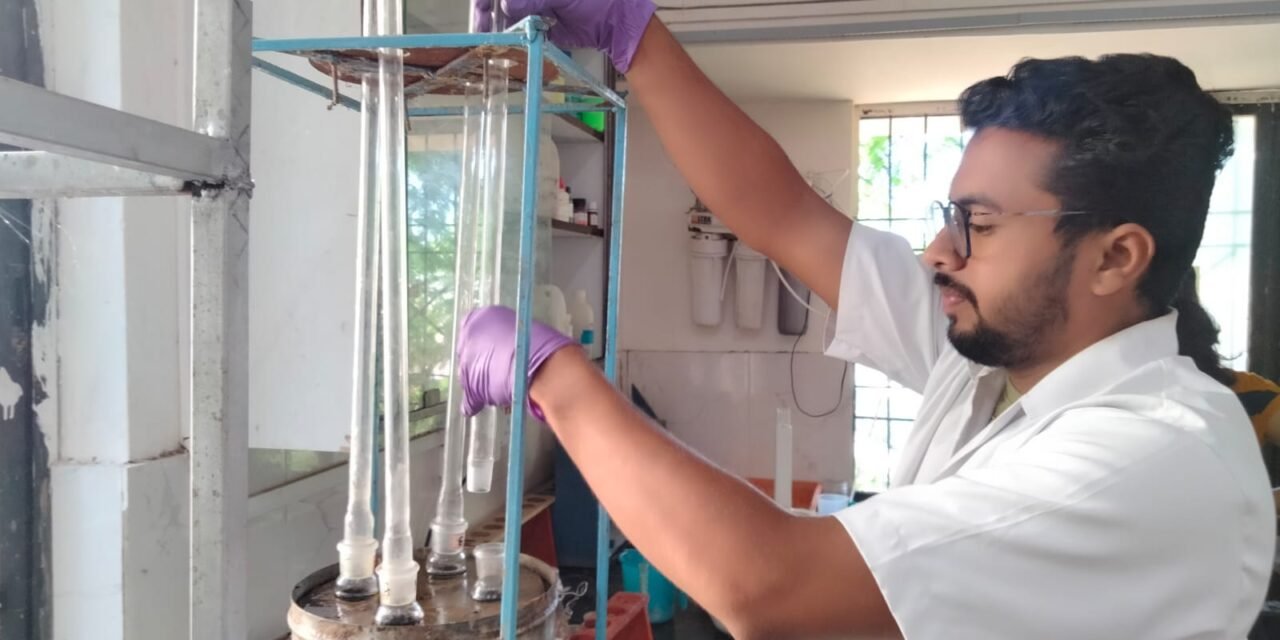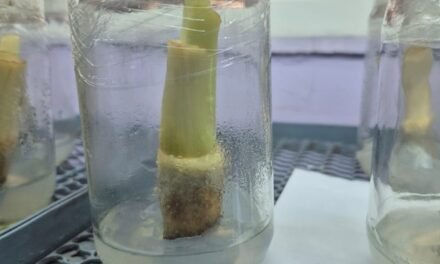Date 29-09-2021
OBJECTIVE : COD OF APPLE AND TOMATO
Chemical oxygen demand (COD) is an indirect measurement of the amount of organic matter in a sample. With this test, you can measure virtually all organic compounds that can be digested by a digestion reagent.
COD contrasts with biochemical oxygen demand (BOD), which relies on the use of microorganisms to break down the organic material in the sample by aerobic respiration over the course of a set incubation period (typically five days).
BOD and COD correlate with one another in virtually all samples, but BOD is always lower than COD as the biochemical breakdown of organics is often not as complete as the chemical method.
Chemicals and Reagents
- 0.25 M Ferrous Ammonium Sulfate (FAS) :- Dissolve 98 gm Ferrous Ammonium Sulfate + 800 ml distilled water +20 ml Sulfuric acid and make it up to 1000 ml with distilled water.
- 0.25 N K2Cr2O7 :- Dissolve 12.25 gm K2Cr2O7 in 1000 ml volumetric flask and fill Distilled water up to mark.
- potassium hydrogen phthalate (KHP) :- 0.425 gm Dried powder KHP in 1000ml D/W.
- Mercuric Sulfate.
- Ferroin Indicator.
- Apple juice:- 1 apple grind with 200 ml D/W and make dilution as given bellow.
- Tomato juice:- 1 tomato grind with 200 ml D/W and make dilution as given bellow
Date- 30-09-2021
Procedure
1.Take 0.4 HgSO4 ( Mercuric Sulfate) in COD test tube.
2. Add 20 ml KHP sample and add 20 ml D/W in it, Mix well. Run Blank with D/W simultaneously.
3. Add 2-3 cumic stones or glass beads in it.
4.Add 10 ml 0.25 N K2Cr2O7 solution.
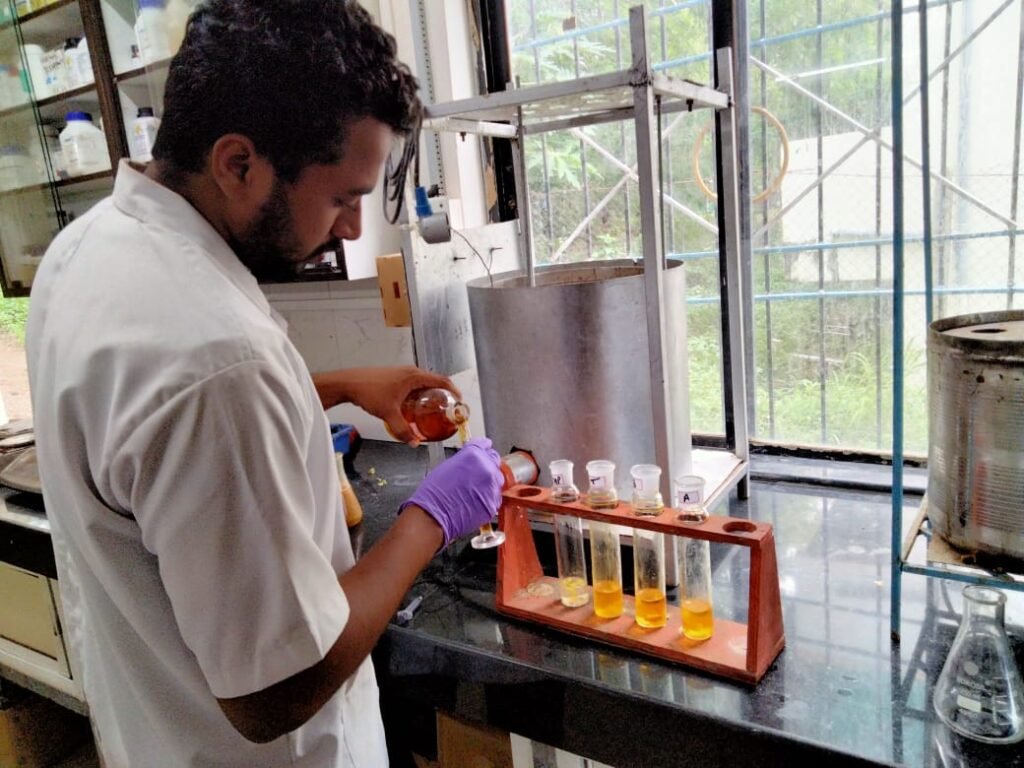
5. Add 30 ml of H2SO4.After addition of H2SO4, If color changes to green then it goes up to limit of our COD apparatus so we add know quantity of K2Cr2O7 or we make dilution of test sample.
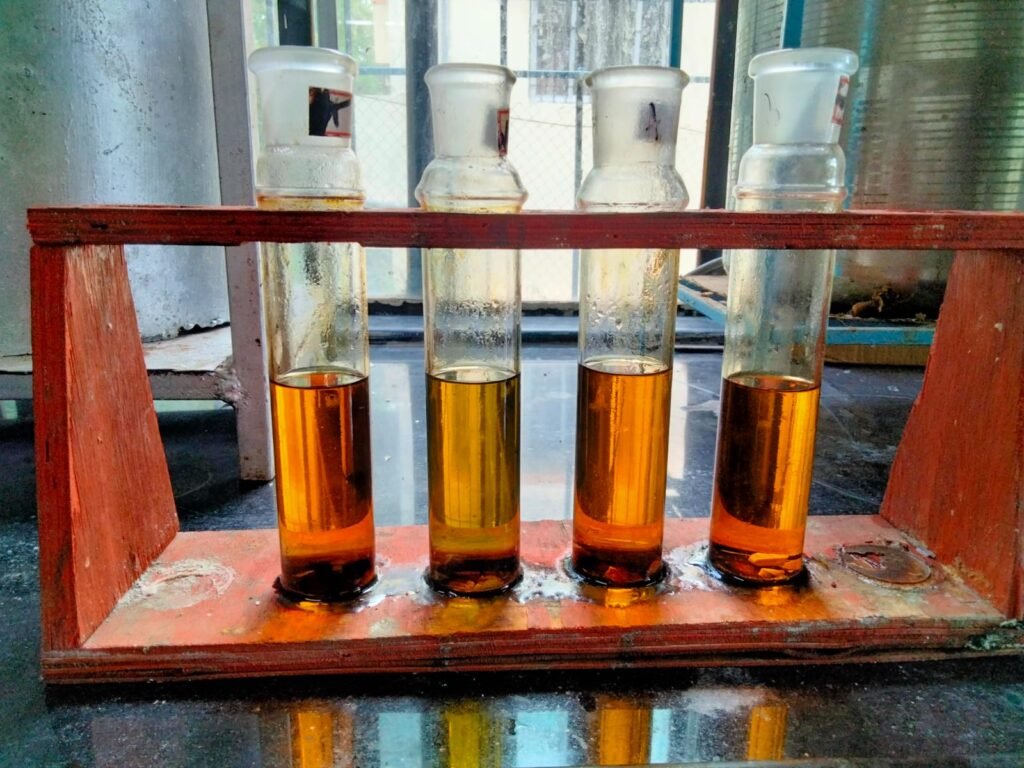
6.Refulx for 2 hrs. at 150°C in COD chamber.
Date- 01-10-2021
7.Take out COD tubes for cooling.
8.After cooling ,Take all solution in conical flask and add 150 ml D/W and add 5 drops of ferroin indicator. and titer against FAS.
9. Add drop by drop FAS up to color changes from yellowish orange to brick red color. Note down reading. and calculate.
Calculation of COD
Where,
b is the volume of FAS used in the blank sample,
s is the volume of FAS in the original sample,
and n is the normality of FAS.
8000 = milli equivalent weight of oxygen (8) ×1000 mL/L.
If milliliters are used consistently for volume measurements, the result of the COD calculation is given in mg/L.
Mechanism
For all organic matter to be completely oxidized, an excess amount of potassium dichromate (or any oxidizing agent) must be present. Once oxidation is complete, the amount of excess potassium dichromate must be measured to ensure that the amount of Cr3+ can be determined with accuracy. To do so, the excess potassium dichromate is titrated with ferrous ammonium sulfate (FAS) until all of the excess oxidizing agent has been reduced to Cr3+. Typically, the oxidation-reduction indicator ferroin is added during this titration step as well. Once all the excess dichromate has been reduced, the ferroin indicator changes from blue-green to a reddish brown. The amount of ferrous ammonium sulfate added is equivalent to the amount of excess potassium dichromate added to the original sample. Note: Ferroin indicator is bright red from commercially prepared sources, but when added to a digested sample containing potassium dichromate it exhibits a green hue. During the titration the color of the indicator changes from a green hue to a bright blue hue to a reddish brown upon reaching the endpoint. Ferroin indicator changes from red to pale blue when oxidized.
Why we use KHP?
Before completing the COD test, a series of known standards are prepared using KHP (potassium hydrogen phthalate). Most wastewater samples will fall in the high range, so standards of 100, 250, 500 and 1000 mg/L are typically prepared. COD standards can also be purchased. So we prepared KHP solution of 500 COD so we can test our instruments and chemical are in working condition or not.
How to make dilution of Apple and Tomato
Method-1
Take 0.1 ml Apple or Tomato juice and add in 19.9 ml D/W. This will become 1:200 dilution .
Take out 2 ml from 1:200 dilution and add in 18 ml D/W. so it will become 1:2000 dilution.
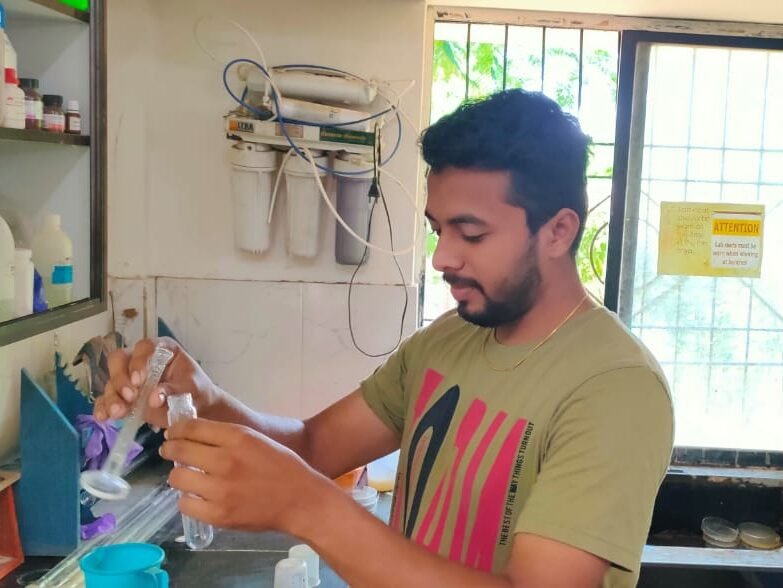
Method-2
Take 1 ml Tomato or Apple juice and add in 1999 ml D/W. so we can directly get dilution of 1:2000.
*I used method-1 because it require less amount i.e. only up to 40 ml D/W to make 1:2000 dilution.
and Proceed and Calculate same as above.
| Solution | Burette reading | COD(mg/lit.) |
| Blank | 11.5 | 0 |
| KHP | 6.5 | 500 |
| Apple | 10.7 | 1,60,000 |
| Tomato | 11.3 | 40,000 |


